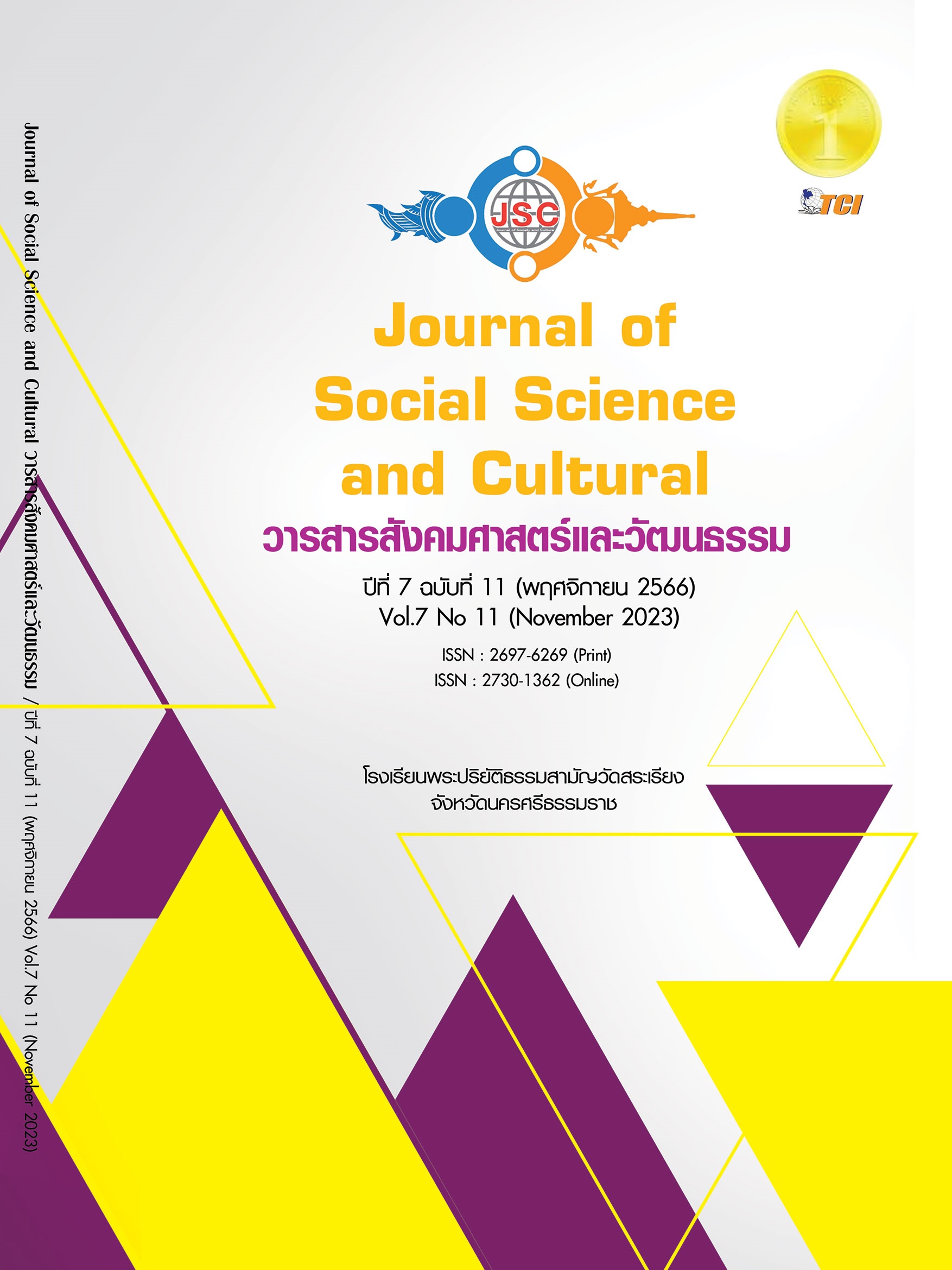THE ADMINISTRATIVE EXCELLENCE MODEL OF BEACH VOLLEYBALL OF DANCHANGWITTAYA SCHOOL UNDER THE SECONDARY EDUCATION AREA OFFICE 9
Main Article Content
Abstract
The purpose of this journal was to 1) study the component of the administrative excellence model of Beach Volleyball, 30 keys informants by purposive sampling and collecting data with questionnaire. 2) Develop and verify the administrative excellence model of Beach Volleyball of Danchangwittaya school, 13 target group were experts to verify a propriety and feasibility. 3) to implement the administrative excellence model, 39 target group were administrators, teachers, teachers responsible management for Beach Volleyball, person responsible management for Beach Volleyball, expert for sport management, the instrument is the evaluate of administrative excellence model. 4. to assess the satisfaction of involved to the administrative excellence model, 323 samplings were administrators, teachers, basic education committee, parents and students, the instrument is the satisfaction evaluate form, statistic in this phase used the mean and Standard Deviation. This research design for mixed method research and this research found that’s; 1. the components of the administrative excellence model of Beach Volleyball of Danchangwittaya school were 6 components namely planning, organization, management, competency development, controlling and continuous quality Improvement. 2. The develop and verify of administrative excellence model by Propriety and Feasibility was at a highest level (µ = 4.68, s = .74) 3. The implement of the administrative excellence model of Beach Volleyball was at a highest level 4. the satisfaction of involved to the administrative excellence model of Beach Volleyball was at a highest level.( = 4.82, SD = .72)
Article Details
References
เทิดทูล โตคีรี. (2558). รูปแบบการพัฒนาศูนย์ฝึกนักกีฬาฟุตบอลเยาวชนของสโมสรฟุตบอลอาชีพ. ใน ดุษฎีนิพนธ์ปรัชญาดุษฎีบัณฑิต สาขาการศึกษาแขนงการจัดการกีฬา. มหาวิทยาลัยนเรศวร.
ปรีชา พงษ์เพ็ง. (2558). รูปแบบการจัดการที่มีประสิทธิภาพของศูนย์การกีฬาแห่งประเทศไทย จังหวัดสุพรรณบุรี. วารสารบริหารธรุกิจศรีนครินทรวิโรฒ, 6(1), 93-102.
พงษ์เอก สุขใส และคณะ. (2556). รูปแบบการบริหารจัดการกีฬาขององค์การบริหารส่วนจังหวัด. วารสารศึกษาศาสตร์ มหาวิทยาลัยนเรศวร, 16(4), 104-115.
พรพิมล รุ่งเรืองศิลป์ และคณะ. (2559). สภาพปัญหาการจัดการกีฬาเพื่อสุขภาพในมหาวทิยาลยัราชภัฏ. รมยสาร, 16(2), 449-464.
รัตนา ยอดหาญ. (2559). ความคล่องตัวในการเต้นรำของนักศึกษาวิทยาลัยพลศึกษาในเขตภาคเหนือ. ใน วิทยานิพนธ์การศึกษามหาบัณฑิต สาขาวิชาพลศึกษา. มหาวิทยาลัยศรีนครินทรวิโรฒ.
สมาคมกีฬาแห่งประเทศไทย. (2553). การจัดทำรูปแบบและระบบพัฒนากีฬาเป็นเลิศ รูปแบบ (Model) การพัฒนากีฬาเป็นเลิศ. กรุงเทพมหานคร: การกีฬาแห่งประเทศไทย.
แอน มหาคีตะ และถนอมศักดิ์ เสนาคำ. (2557). รูปแบบการบริหารจัดการองค์กรกีฬาคนพิการในประเทศไทย. วารสารคณะพลศึกษา, 17(1), 163-175.
Cronbach, L. J. (1990). Essentials of psychological testing (5th ed.). New York: Harper Collins. Publishers.
Dana, L. P. & Ramadani, H, X. (2015). Examining the impact of new policy facilitating SME succession in Japan: from a viewpoint of risk management in family . Int. J. Entrepreneurship and Small Business, 16(1), 60-70.
Dean, J. & Evans, J. R. (1994). The Management and Control of Quality . Cincinnati, OH: South-Western College Publishing.
Gallien, C. L. (2006). Sport, education and society realities and prospects. In World university presidents summit. proceedings and papers, Bangkok, Thailand.n.p.
Hegazy, A. F. (2012). Obstacles to applying total quality management to sport clubs in Al-Jouf. Saudi Arabia in World Journal of Sport Sciences, 6(1), 1-5.
Jyoti, M. D. (2017). Total Quality Management (TQM) in Sports . International Journal of Movement Education and Social Science, 6(2). 1-5.
Nova, J. L. . (2013). Total Quality Management Handbook. New York: McGraw-Hill.
Ratten, V. (2015). A US-China comparative study of cloud computing adoption behavior: The role of consumer innovativeness, performance expectations and social influence . Journal of entrepreneurship in emerging economies, 6(1), 53-71.
Sureshchandar, G.S., et al. (2001). A conceptual model for total quality management in service organization. Total quality management, 12(3), 343-363.
Yamane, T. (1973). Statistics: An Introductory Analysis. (3rd Ed). New York: Harper and Row Publications.


